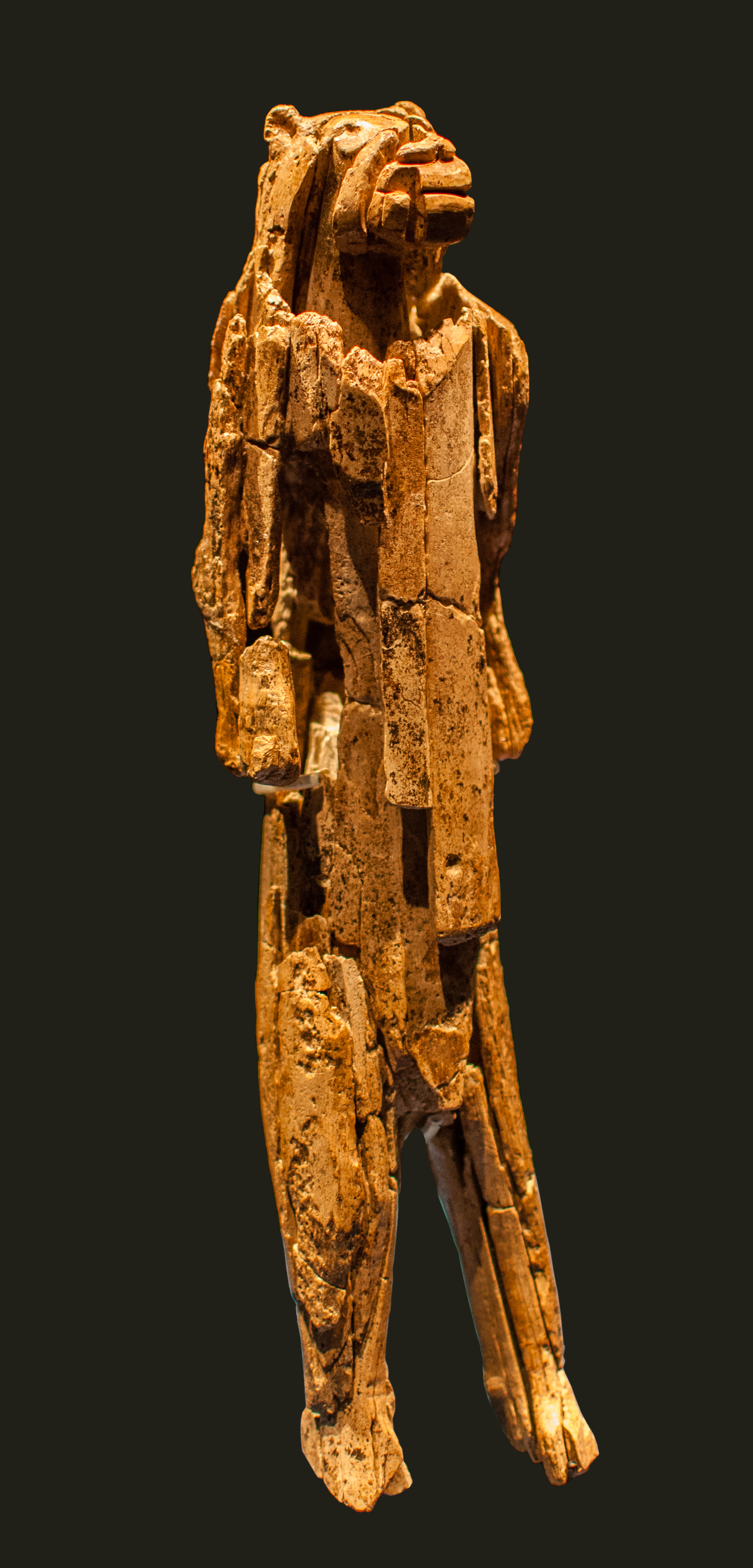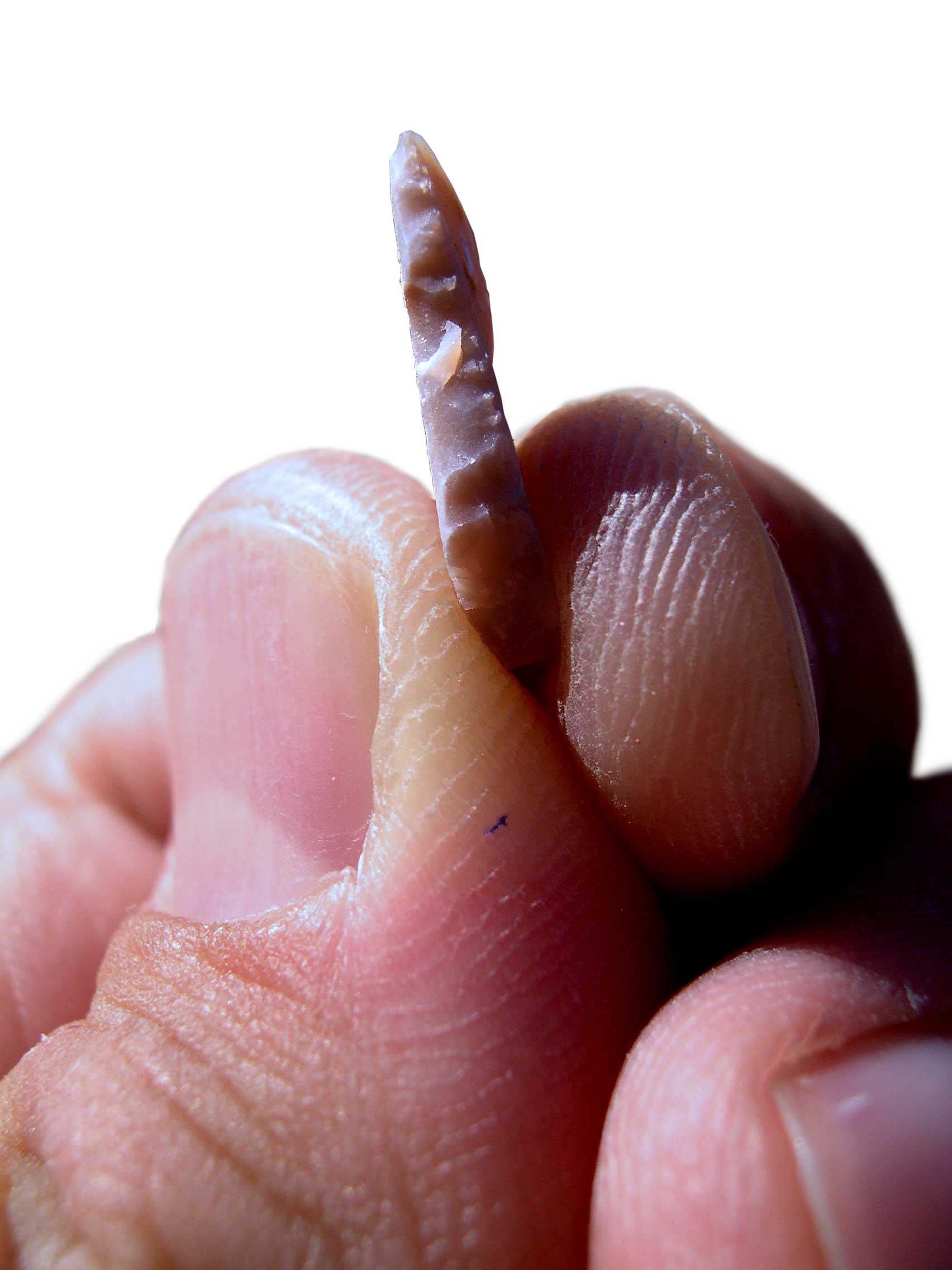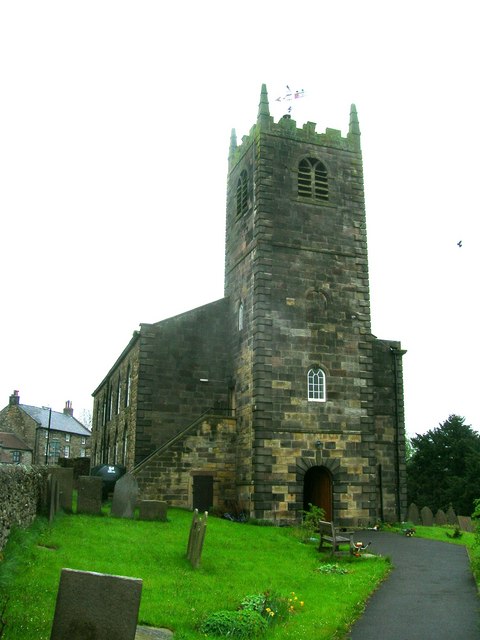|
High Wheeldon
High Wheeldon is a dome-shaped hill near the Staffordshire border in Hartington Middle Quarter civil parish, Derbyshire, in the Peak District valley of Upper Dovedale, overlooking the villages of Earl Sterndale, Longnor and Crowdecote. It is close to Chrome Hill and Parkhouse Hill. High Wheeldon has been in the care of the National Trust since 1946 when it was donated by the owner to the Trust as a war memorial. A plaque at the summit says that the hill was presented 'in honoured memory of the men of Derbyshire and Staffordshire who fell in the Second World War'. Slightly below the summit of the hill is a rock shelter called Fox Hole Cave, which is closed by an iron gate as it has archaeological significance. Items, including Peterborough ware, early Bronze Age pottery, a stone axe, flint microliths and animal bones, have been found in the cave, which is believed to have been used from the Upper Paleolithic The Upper Paleolithic (or Upper Palaeolithic) is the thir ... [...More Info...] [...Related Items...] OR: [Wikipedia] [Google] [Baidu] |
Hartington Middle Quarter
Hartington Middle Quarter is a civil parish within the Derbyshire Dales district, which is in the county of Derbyshire, England. Formerly a part of Hartington parish, for which it is named, it has a mix of a number of villages and hamlets amongst a mainly rural and undulating landscape, and is wholly within the Peak District National Park. It had a population of 379 residents in 2011. The parish is north west of London, north west of Derby, and south east of the nearest market town of Buxton. Being on the edge of the county border, it shares a boundary with the parishes of Chelmorton, Flagg, Hartington Town Quarter, Hartington Upper Quarter, Middleton and Smerrill, Monyash in Derbyshire, as well as Hollinsclough, Longnor and Sheen in Staffordshire. Geography Location Hartington Middle Quarter parish is surrounded by the following local locations: * Buxton, Chelmorton and Sterndale Moor to the north * Hartington and Pilsbury to the south * Flagg and Monyash to the ... [...More Info...] [...Related Items...] OR: [Wikipedia] [Google] [Baidu] |
Chrome Hill
Chrome Hill is a limestone reef knoll in Derbyshire, England, in the upper River Dove, Central England, Dove valley beside the border with Staffordshire, within the civil parish of Hartington Middle Quarter. It is adjacent to Parkhouse Hill, another reef knoll. The walk over Chrome Hill and Parkhouse Hill is known as the Dragon's Back ridge. Chrome Hill was declared open access land under the provisions of the Countryside and Rights of Way Act 2000. However, the only access from the north west remains along a Rights of way in England and Wales#Permissive path, concessionary footpath. Chrome Hill contains good exposures of ''Gigantoproductus'' fossils; it is part of a designated List of Sites of Special Scientific Interest in Derbyshire, Site of Special Scientific Interest which makes it an offence for visitors to remove geological samples. A double sunset can sometimes be seen against Chrome Hill from the southern flank of Parkhouse Hill; and also from nearby Glutton Bridg ... [...More Info...] [...Related Items...] OR: [Wikipedia] [Google] [Baidu] |
Upper Paleolithic
The Upper Paleolithic (or Upper Palaeolithic) is the third and last subdivision of the Paleolithic or Old Stone Age. Very broadly, it dates to between 50,000 and 12,000 years ago (the beginning of the Holocene), according to some theories coinciding with the appearance of behavioral modernity in early modern humans. It is followed by the Mesolithic. Anatomically modern humans (i.e. ''Homo sapiens'') are believed to have emerged in Africa around 300,000 years ago. It has been argued by some that their ways of life changed relatively little from that of archaic humans of the Middle Paleolithic, until about 50,000 years ago, when there was a marked increase in the diversity of Artefact (archaeology), artefacts found associated with modern human remains. This period coincides with the most common date assigned to early human migrations, expansion of modern humans from Africa throughout Asia and Eurasia, which may have contributed to the Neanderthal extinction, extinction of th ... [...More Info...] [...Related Items...] OR: [Wikipedia] [Google] [Baidu] |
Microliths
A microlith is a small Rock (geology), stone tool usually made of flint or chert and typically a centimetre or so in length and half a centimetre wide. They were made by humans from around 60,000 years ago, across Europe, Africa, Asia and Australia. The microliths were used in spear points and arrowheads. Microliths are produced from either a small blade (Microblade technology, microblade) or a larger blade-like piece of flint by abrupt or truncated retouch (lithics), retouching, which leaves a very typical piece of waste, called a microburin. The microliths themselves are sufficiently worked so as to be distinguishable from workshop waste or accidents. Two families of microliths are usually defined: laminar and geometric. An assemblage of microliths can be used to date an archeological site. Laminar microliths are slightly larger, and are associated with the end of the Upper Paleolithic and the beginning of the Epipaleolithic era; geometric microliths are characteristic of the M ... [...More Info...] [...Related Items...] OR: [Wikipedia] [Google] [Baidu] |
Bronze Age
The Bronze Age () was a historical period characterised principally by the use of bronze tools and the development of complex urban societies, as well as the adoption of writing in some areas. The Bronze Age is the middle principal period of the three-age system, following the Stone Age and preceding the Iron Age. Conceived as a global era, the Bronze Age follows the Neolithic, with a transition period between the two known as the Chalcolithic. The final decades of the Bronze Age in the Mediterranean basin are often characterised as a period of widespread societal collapse known as the Late Bronze Age collapse (), although its severity and scope are debated among scholars. An ancient civilisation is deemed to be part of the Bronze Age if it either produced bronze by smelting its own copper and alloying it with tin, arsenic, or other metals, or traded other items for bronze from producing areas elsewhere. Bronze Age cultures were the first to History of writing, develop writin ... [...More Info...] [...Related Items...] OR: [Wikipedia] [Google] [Baidu] |
Peterborough Ware
Peterborough ware is a decorated British Neolithic pottery style of the early to middle English Neolithic. Named after Peterborough, the nearest city to where the style was first discovered, it is found in the region of South-East England and East Anglia. it is known for the impressed pits made by bone or wood implements in its sides. Whipped cord was also used to make circular 'maggot' patterns. Ebbsfleeet ware, Fengate ware and Mortlake ware have been identified as subdivisions of Peterborough ware. The term was introduced by R. A. Smith based on examples found at Fengate, near Peterborough. It originally referred to all neolithic impressed ware, without restricting by location, but now primarily refers to finds of this type in southern and eastern England. The earliest form of Peterborough ware is known as Ebbsfleet style and had minimal decoration, although this later became more complex. Peterborough ware may have evolved from the earlier Grimston-Lyles Hill ware, aro ... [...More Info...] [...Related Items...] OR: [Wikipedia] [Google] [Baidu] |
Fox Hole Cave On High Wheeldon Hill
Foxes are small-to-medium-sized omnivorous mammals belonging to several genera of the family Canidae. They have a flattened skull; upright, triangular ears; a pointed, slightly upturned snout; and a long, bushy tail ("brush"). Twelve species belong to the monophyly, monophyletic "true fox" group of genus ''Vulpes''. Another 25 current or extinction, extinct species are sometimes called foxes – they are part of the paraphyly, paraphyletic group of the South American foxes or an outlying group, which consists of the bat-eared fox, gray fox, and island fox. Foxes live on every continent except Antarctica. The most common and widespread species of fox is the red fox (''Vulpes vulpes'') with about 47 recognized subspecies. The global distribution of foxes, together with their widespread reputation for cunning, has contributed to their prominence in popular culture and folklore in many societies around the world. The Fox hunting, hunting of foxes with packs of hounds, long an est ... [...More Info...] [...Related Items...] OR: [Wikipedia] [Google] [Baidu] |
National Trust For Places Of Historic Interest Or Natural Beauty
The National Trust () is a heritage and nature conservation charity and membership organisation in England, Wales and Northern Ireland. The Trust was founded in 1895 by Octavia Hill, Sir Robert Hunter and Hardwicke Rawnsley to "promote the permanent preservation for the benefit of the Nation of lands and tenements (including buildings) of beauty or historic interest". It has since been given statutory powers, starting with the National Trust Act 1907. Historically, the Trust acquired land by gift and sometimes by public subscription and appeal, but after World War II the loss of country houses resulted in many such properties being acquired either by gift from the former owners or through the National Land Fund. One of the largest landowners in the United Kingdom, the Trust owns almost of land and of coast. Its properties include more than 500 historic houses, castles, archaeological and industrial monuments, gardens, parks, and nature reserves. Most properties are open ... [...More Info...] [...Related Items...] OR: [Wikipedia] [Google] [Baidu] |
Parkhouse Hill
Parkhouse Hill is a small but distinctive hill in the Peak District National Park of the Hartington Middle Quarter civil parish, in the English county of Derbyshire. It lies on the north side of the River Dove, close to the border with Staffordshire. Geologically, the hill is the remains of an atoll (a 'reef knoll') which is believed to have existed during the Carboniferous period when what is now the Peak District was covered by a tropical sea. Together with its higher but less distinctive neighbour, Chrome Hill, it forms the Chrome and Parkhouse Hills SSSI, cited for their geology and limestone flora. The walk over Chrome Hill and Parkhouse Hill is known as the Dragon's Back ridge. For many years access to Parkhouse Hill was difficult, as there was no right of way to the summit. Access is now possible under the Countryside and Rights of Way Act 2000, as the hill is a designated access area. A double sunset can sometimes be seen against Parkhouse Hill from nearby Glutton Gr ... [...More Info...] [...Related Items...] OR: [Wikipedia] [Google] [Baidu] |
Crowdecote
Crowdecote (sometimes spelled Crowdicote) is a small village in Derbyshire, England. It is situated on the border between Derbyshire and Staffordshire about south of Buxton. Crowdecote is within the civil parish of Hartington Middle Quarter. It is thought that the name Crowdecote derives from ''Cruda’s Cot'' (Cruda was a Saxon landowner while 'cot' meant a form of shelter). Crowdecote is popular with walkers and ramblers because of its proximity to Chrome Hill, High Wheeldon and Parkhouse Hill to the north and Dovedale Dovedale is a valley in the Peak District of England. The land is owned by the National Trust and attracts a million visitors annually. The valley was cut by the River Dove, Central England, River Dove and runs for just over between Milldale ... to the south. See also * Listed buildings in Hartington Middle Quarter References External links Villages in Derbyshire Towns and villages of the Peak District Derbyshire Dales {{Derbyshire-geo-s ... [...More Info...] [...Related Items...] OR: [Wikipedia] [Google] [Baidu] |
Derbyshire
Derbyshire ( ) is a ceremonial county in the East Midlands of England. It borders Greater Manchester, West Yorkshire, and South Yorkshire to the north, Nottinghamshire to the east, Leicestershire to the south-east, Staffordshire to the south and west, and Cheshire to the west. Derby is the largest settlement, and Matlock is the county town. The county has an area of and a population of 1,053,316. The east of the county is more densely populated than the west, and contains the county's largest settlements: Derby (261,400), Chesterfield (88,483), and Swadlincote (45,000). For local government purposes Derbyshire comprises a non-metropolitan county, with eight districts, and the Derby unitary authority area. The East Midlands Combined County Authority includes Derbyshire County Council and Derby City Council. The north and centre of Derbyshire are hilly and contain the southern end of the Pennines, most of which are part of the Peak District National Park. They include Kinde ... [...More Info...] [...Related Items...] OR: [Wikipedia] [Google] [Baidu] |
Longnor, Staffordshire
Longnor is a village in the Staffordshire Peak District, England. The settlement dates from early times, the first recorded church building being in the Middle Ages. The village was named ''Longenalre'' in the Domesday Book. Located on a major crossroads, Longnor was a significant market town in the 18th century. It lies on the north bank of the River Manifold, on a limestone ridge between the Manifold and the River Dove. Location and geography Longnor is about south of Buxton on the B5053 main road from Cheadle to Buxton. It is at a crossroads with routes to Leek and Macclesfield to the west and Bakewell to the east. West of Longnor are the Staffordshire Moorlands, with a summit at Axe Edge Moor towards the north and Morridge further south. North and east of Longnor is the White Peak section of the Peak District, with the Dove flowing in a steep-sided limestone valley of which the famous Dovedale is a small part. Longnor looks towards the Manifold but lies on the south ... [...More Info...] [...Related Items...] OR: [Wikipedia] [Google] [Baidu] |






